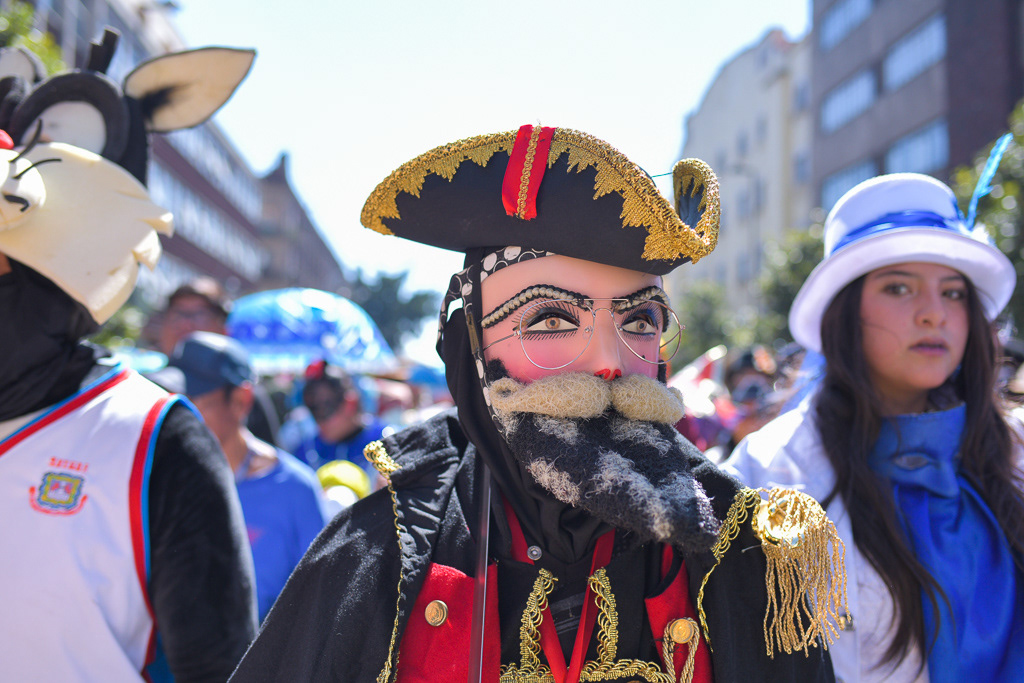
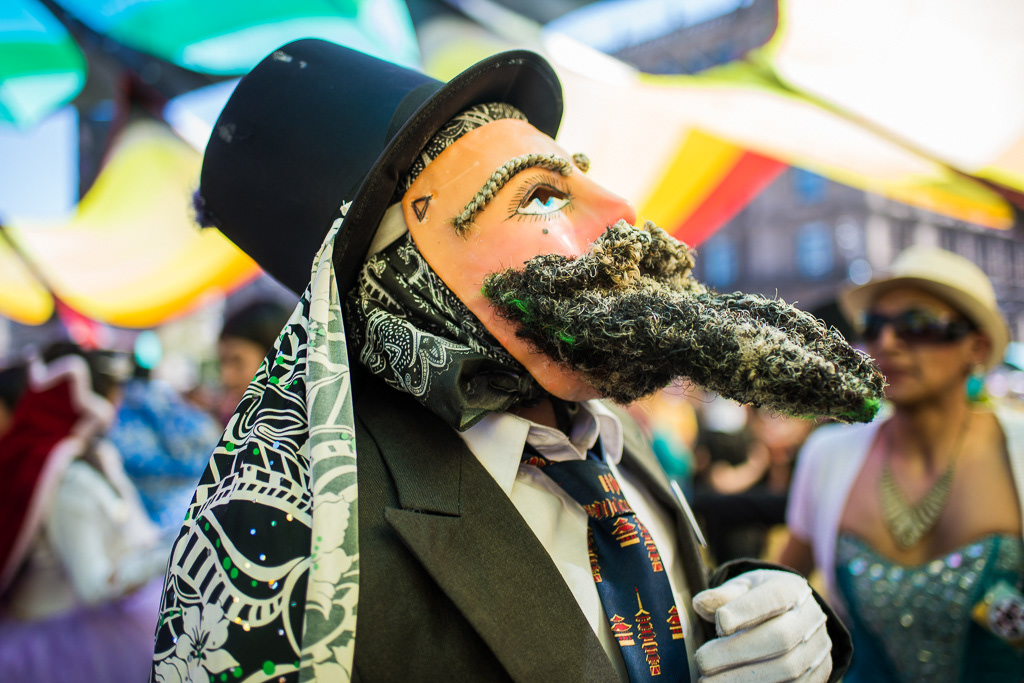
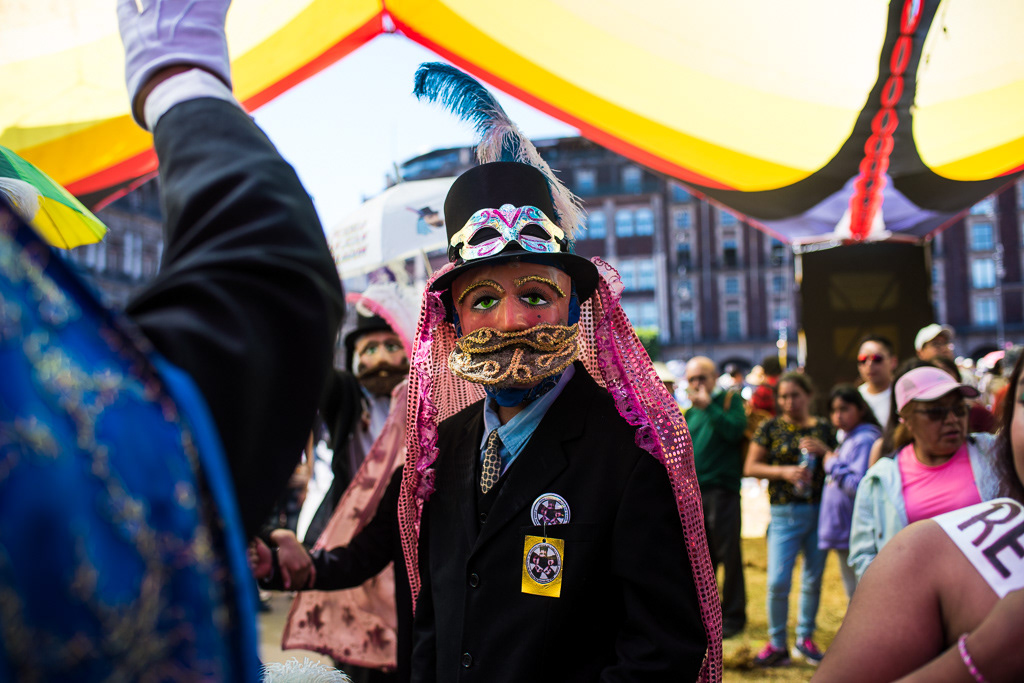
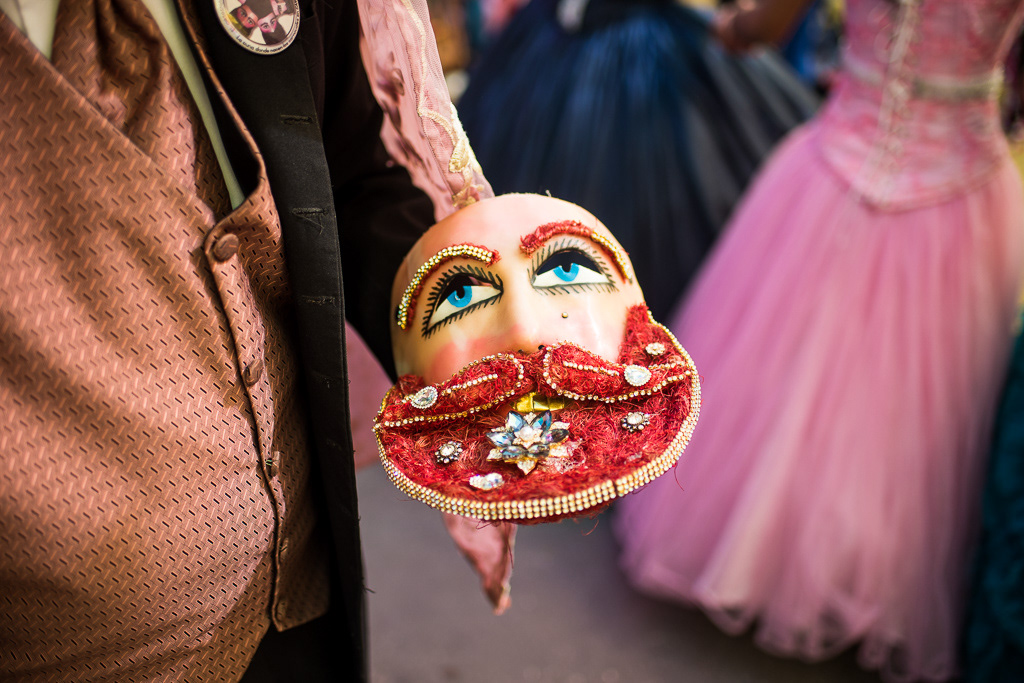
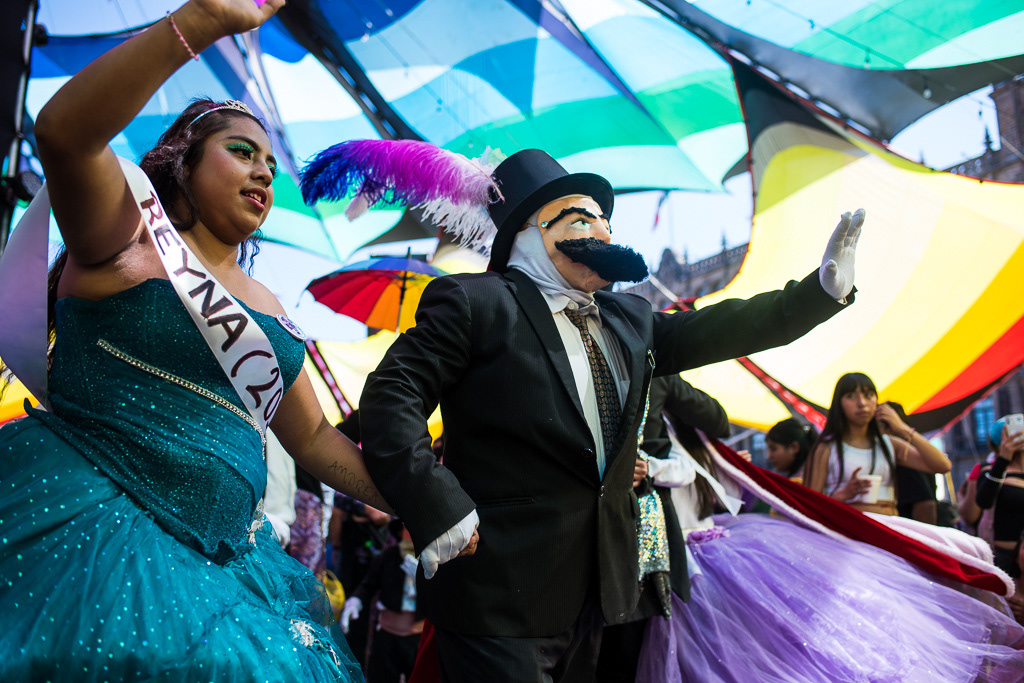
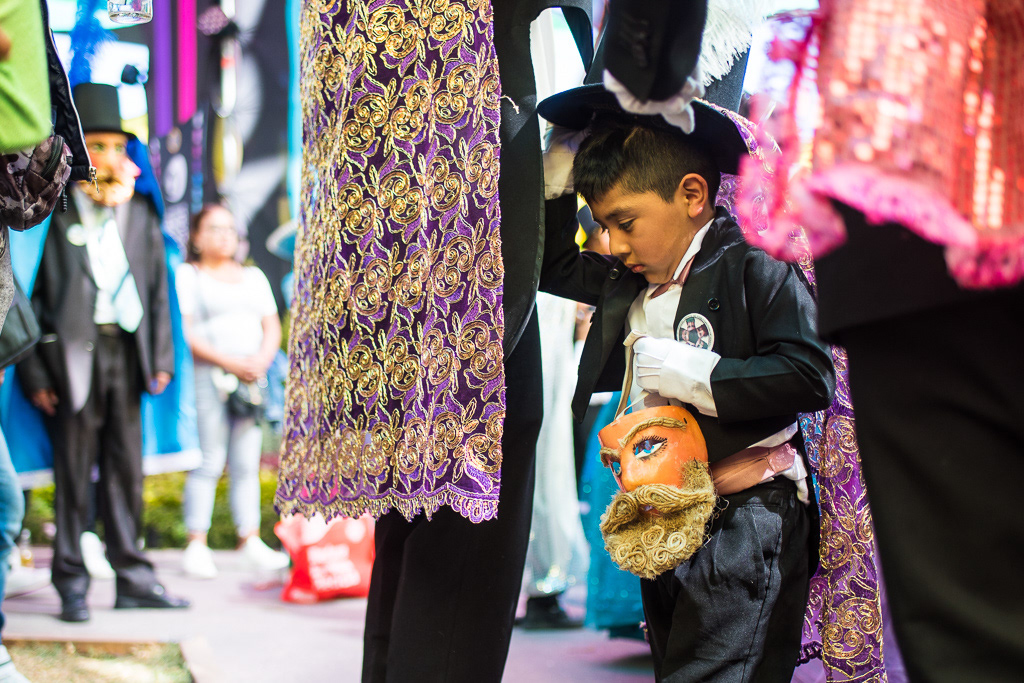
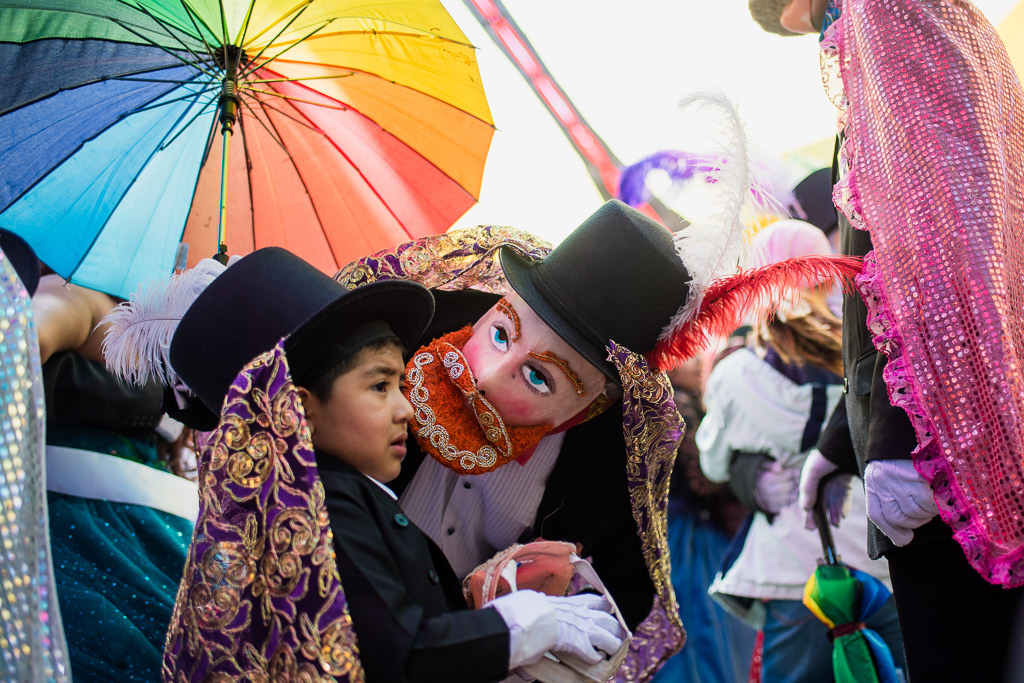
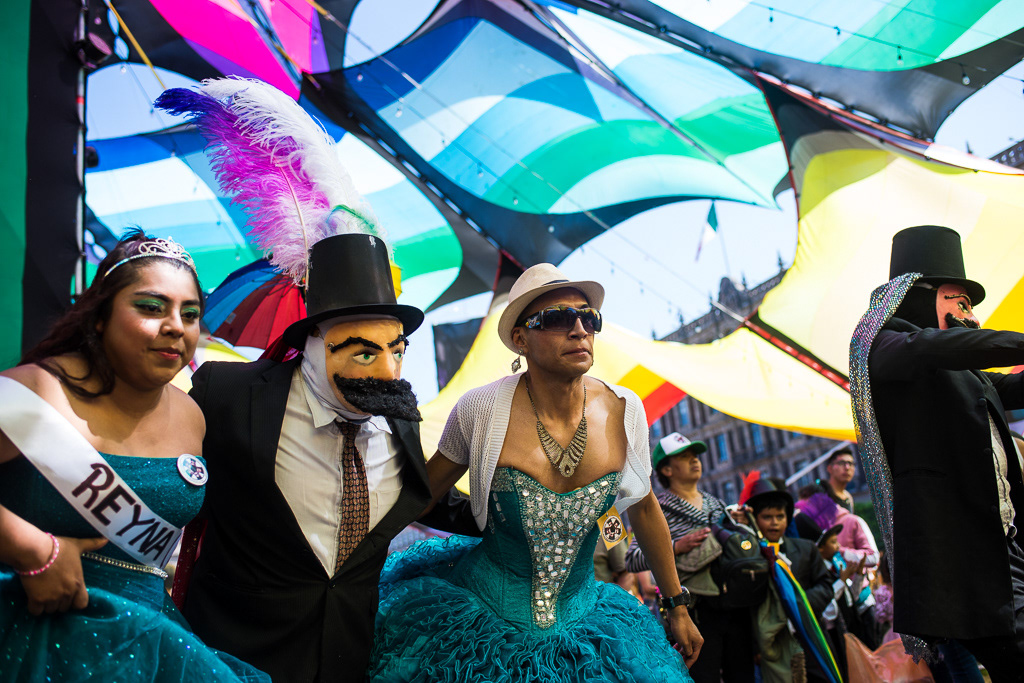
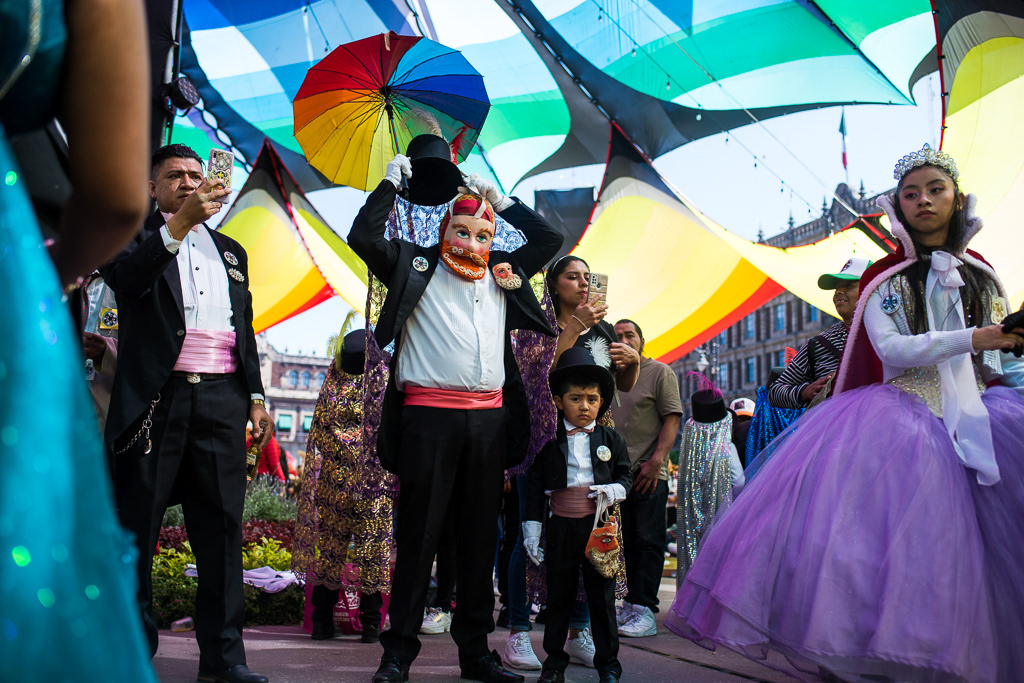
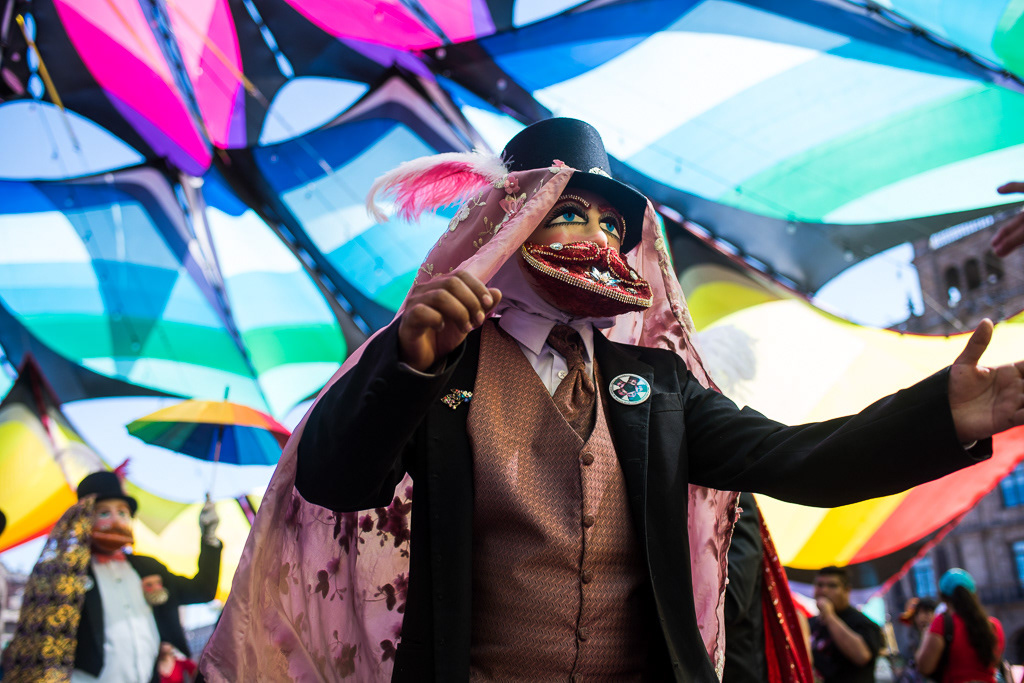
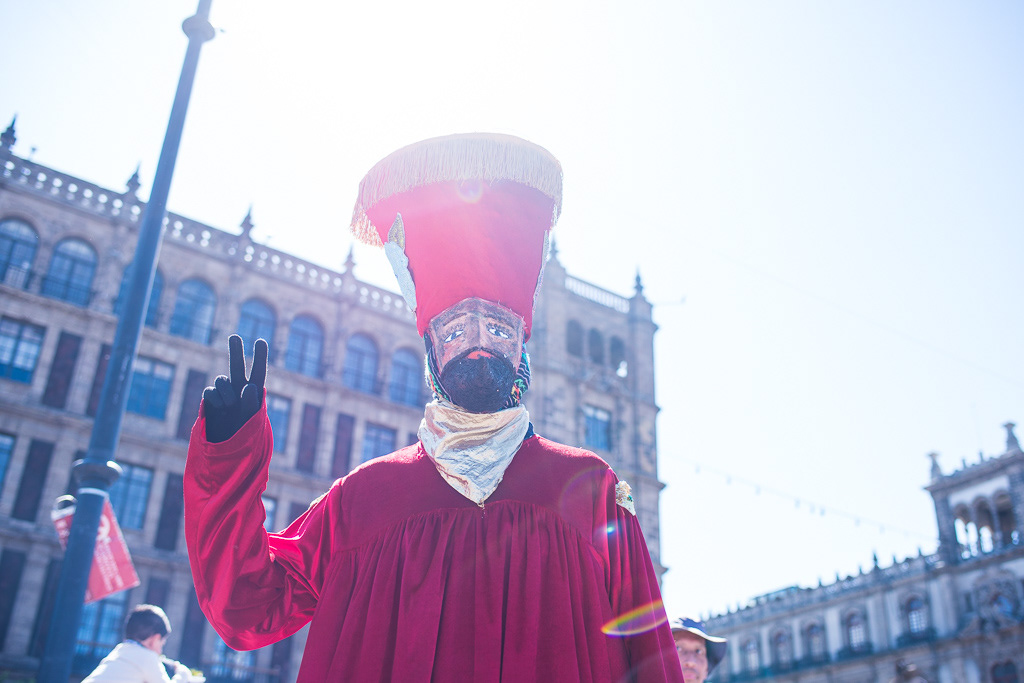
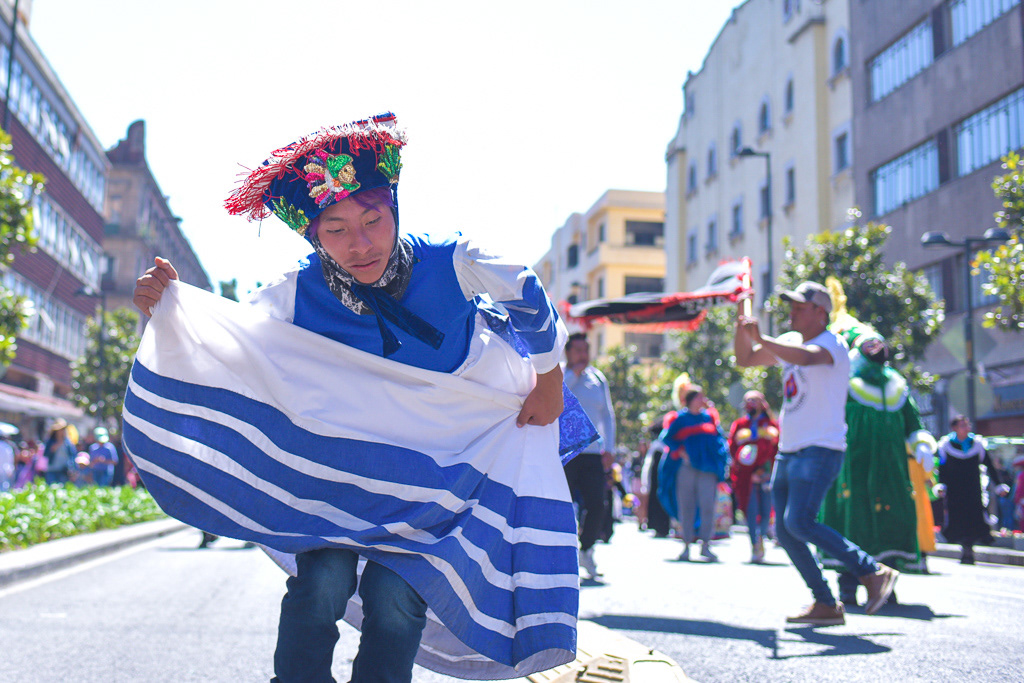
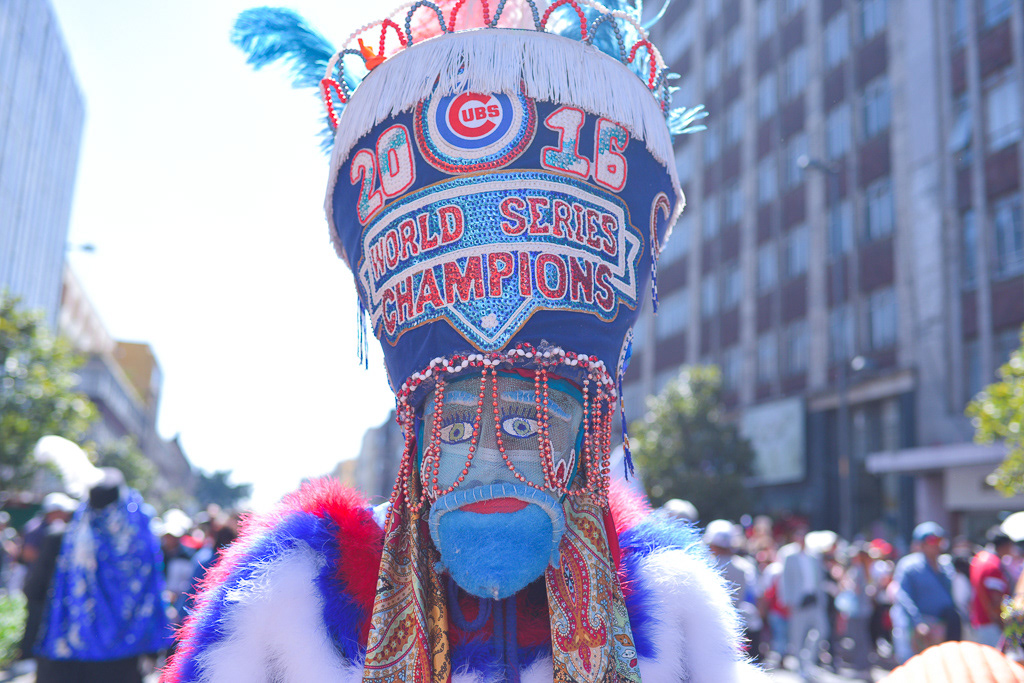
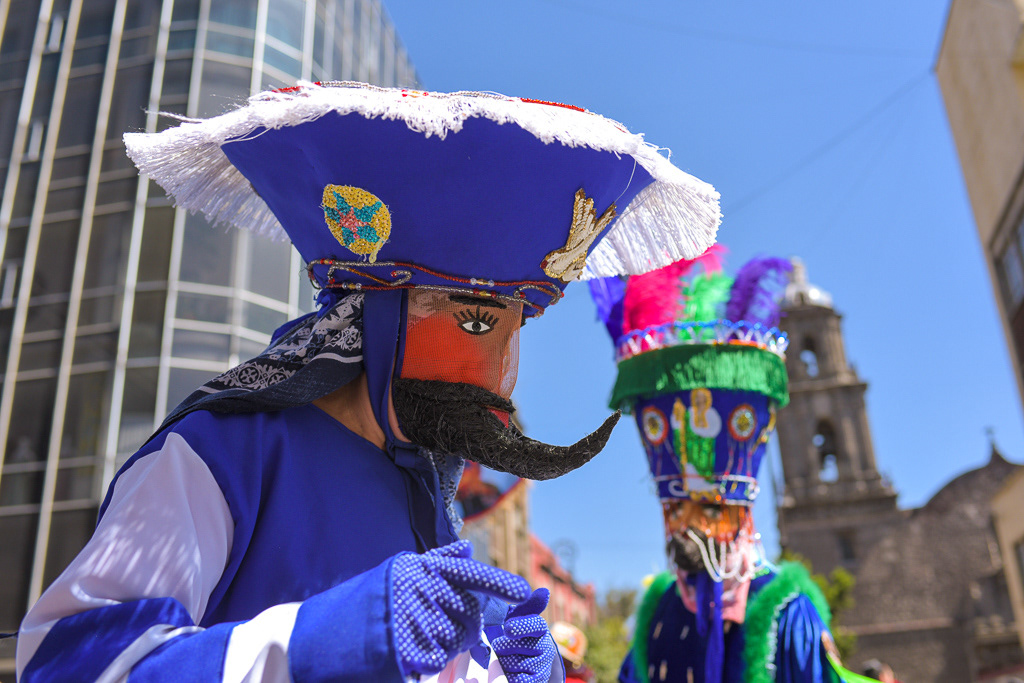
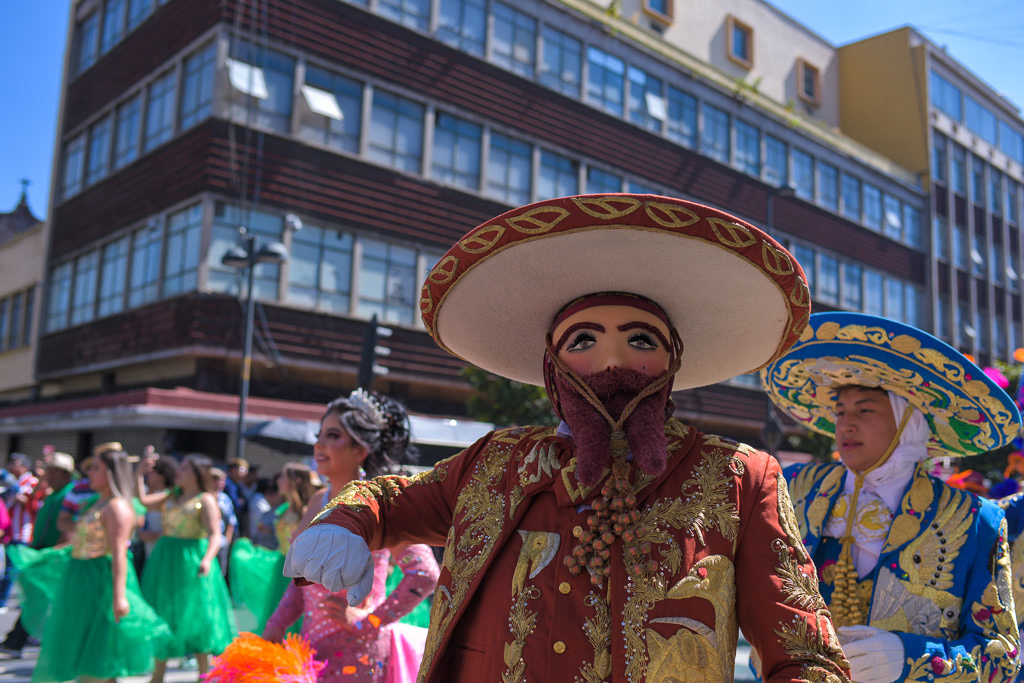
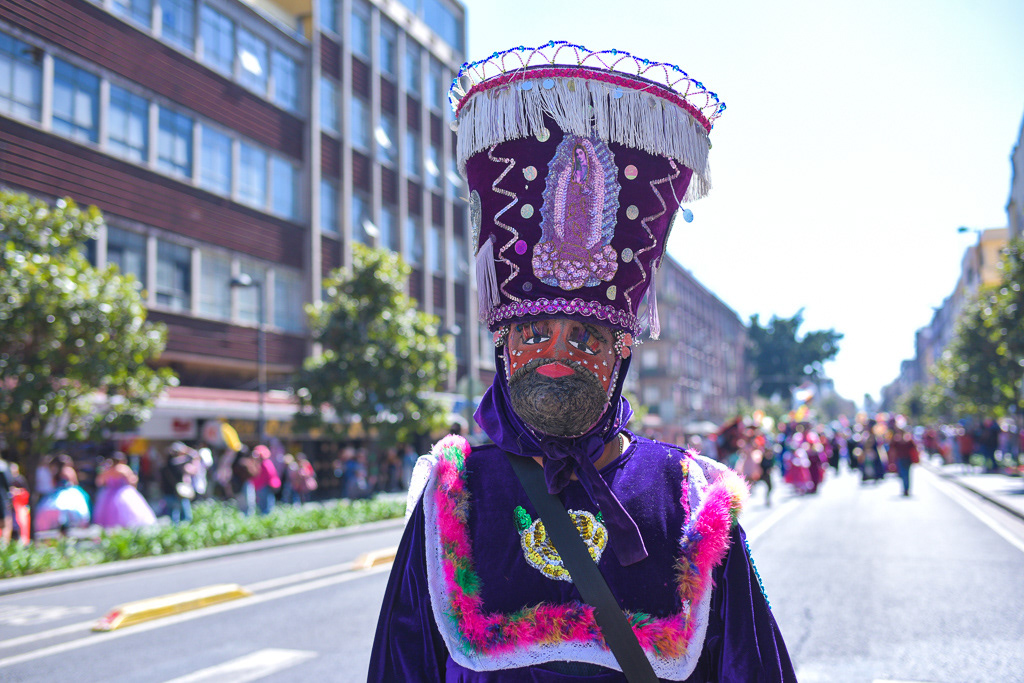
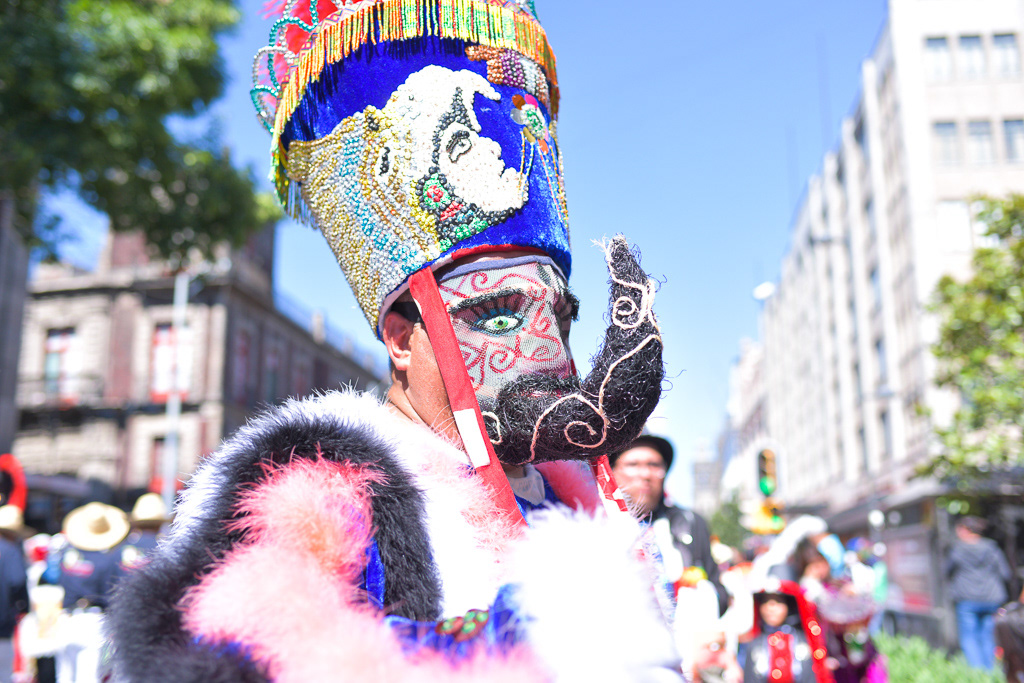
This series of photographs narrates the first parade of Chinelos and Huehuenches in the Plaza de la Constitución, Mexico City. The prohibition of this dance originated in the 16th century as a mockery, critique, and satire of European carnivals and the colonizing people. After the ban, the dancers migrated to the outskirts of the city, to their native towns. The 'guegenchis' or dance of the masks was presented as an act of resistance against labor exploitation and land dispossession. The word 'huehuenche' comes from Nahuatl and means 'old man', while 'chinelo' derives from 'tzineloua', referring to the hip movement that characterizes their dance. The typical costumes from Tlayacapan, Yautepec, and Tepoztlán paraded down Avenida 20 de Noviembre with their peculiar wax masks, colored eyes, rosy cheeks, and pointed beards, imitating the face of Maximilian of Habsburg. A historical debt was symbolically repaid by allowing the native peoples to once again dance and express themselves through dance and masks in the Zócalo of Mexico City.
